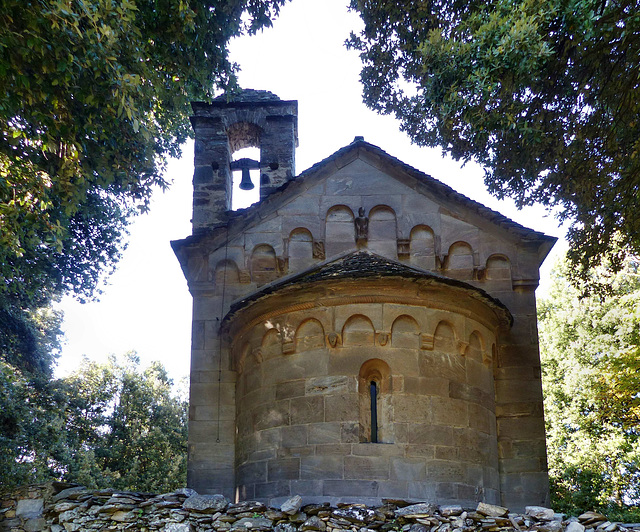Location
Lat, Lng: 42.378993, 9.292867
You can copy the above to your favourite mapping app.
Address: Cambia, Haute-Corse, Corse
You can copy the above to your favourite mapping app.
Address: Cambia, Haute-Corse, Corse
See also...
Keywords
Authorizations, license
-
Visible by: Everyone -
All rights reserved
-
164 visits
Cambia - San Quilico


The island of Corsica is one of the 18 regions of France. It was colonized the Carthaginians, the Greeks, the Etruscans and the Romans. After the Roman empire collapsed, Corsica got invaded by the Vandals and the Ostrogoths. For a short while the island belonged to the Byzantine Empire, then the Franks granted the island to the Pope, in the early 11th century Pisa and Genoa together freed the island from the threat of Arab invasion. The island came under the influence of the Republic of Pisa, later it belonged to Genua for centuries. In 1755 after a long fight for independence from Genoa the independent Corsican Republic was proclaimed, but in 1769, when the island was conquered by France. As the areas near the coast over centuries have been threatened by attacks and raids of pirates many old hamlets and dwellings are wide inland, high in the mountains. So most of the old churches are in the mountains and some of them are hard to find.
When I had found San Quilico (St. Cyr) I realized, that the distance to Santa Maria was just about 500 metres.
And they both looked very similar seen from this point of view. They were certainly built at the same time within the 13th century. Oral tradition knows, that the chapels were built by a father (San Quilico) and his son (Santa Maria). The family was clearly influenced by the Pisan style.
When I had found San Quilico (St. Cyr) I realized, that the distance to Santa Maria was just about 500 metres.
And they both looked very similar seen from this point of view. They were certainly built at the same time within the 13th century. Oral tradition knows, that the chapels were built by a father (San Quilico) and his son (Santa Maria). The family was clearly influenced by the Pisan style.
Other than the sober and unpretentious Santa Maria San Quilico is richly adorned with many carvings. The choir, seen here, has a special surprise.
When I had found San Quilico (St. Cyr) I realized, that the distance to Santa Maria was just about 500 metres.
And they both looked very similar seen from this point of view. They were certainly built at the same time within the 13th century. Oral tradition knows, that the chapels were built by a father (San Quilico) and his son (Santa Maria). The family was clearly influenced by the Pisan style.
When I had found San Quilico (St. Cyr) I realized, that the distance to Santa Maria was just about 500 metres.
And they both looked very similar seen from this point of view. They were certainly built at the same time within the 13th century. Oral tradition knows, that the chapels were built by a father (San Quilico) and his son (Santa Maria). The family was clearly influenced by the Pisan style.
Other than the sober and unpretentious Santa Maria San Quilico is richly adorned with many carvings. The choir, seen here, has a special surprise.
Alexander Prolygin, Aschi "Freestone" have particularly liked this photo
- Keyboard shortcuts:
Jump to top
RSS feed- Latest comments - Subscribe to the comment feeds of this photo
- ipernity © 2007-2025
- Help & Contact
|
Club news
|
About ipernity
|
History |
ipernity Club & Prices |
Guide of good conduct
Donate | Group guidelines | Privacy policy | Terms of use | Statutes | In memoria -
Facebook
Twitter











Sign-in to write a comment.